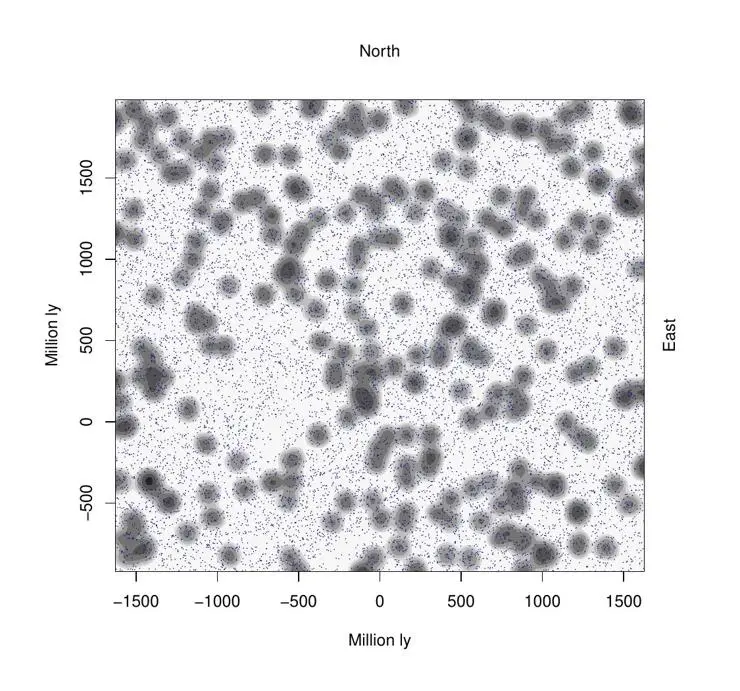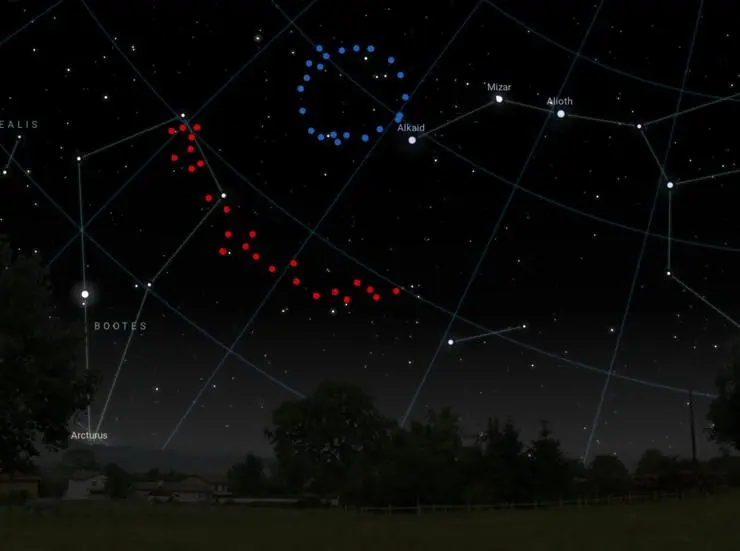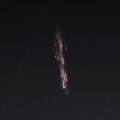The recent discovery of a second ultra-large structure dubbed the “Big Ring” challenges long-held assumptions about the universe’s structure.
Situated 9.2 billion light-years away from Earth, the Big Ring is also creating problems for the current understanding of the basic principles of cosmology.
Alexia Lopez, a PhD student at the University of Central Lancashire (UCLan), revealed the ground-breaking discovery of the Big Ring at the 243rd meeting of the American Astronomical Society (AAS) on January 10.
The colossal structure boasts a diameter of about 1.3 billion light-years and a circumference of nearly four billion light-years. To put its enormity into perspective, if visible, the Big Ring would span an area of the sky equivalent to 15 full Moons.
This is not Lopez’s first discovery of a massive cosmic mystery. Two years prior, she discovered the “Giant Arc,” another megastructure measuring 3.3 billion light-years across. Both the Big Ring and the Giant Arc reside in the same cosmic neighborhood, observed at an identical distance and era in the universe’s timeline, merely 12 degrees apart in the sky.
“Neither of these two ultra-large structures is easy to explain in our current understanding of the universe,” Lopez said in a release issued by UCLan. “And their ultra-large sizes, distinctive shapes, and cosmological proximity must surely be telling us something important – but what exactly?”


Lopez says one potential explanation for the megastructure’s formation is tied to Baryonic Acoustic Oscillations (BAOs), remnants of oscillations from the universe’s infancy. Based on statistical modeling, BAOs are expected to appear as spherical shells within the distribution of galaxies.
However, research indicates that the Big Ring’s properties conflict with typical BAO characteristics, demanding alternative theories for its existence.
Nobel laureate Sir Roger Penrose’s Conformal Cyclic Cosmology (CCC) theory offers one such alternative, suggesting that cosmic rings could signal new phases in the universe’s lifecycle.
Nobel-prize winner Jim Peebles recently hypothesized that vast filamentary structures formed in the early universe known as cosmic strings might also explain the anomalous distribution of galaxies.
Like the Giant Arc, the Big Ring exceeds cosmic structures’ current theoretical size limit. The massive size of these structures creates a convincing challenge to the Cosmological Principle, which posits there is a uniform, large-scale structure to the universe.
Lopez says that a potential explanation for this discrepancy is that the observable universe may not be a representative sample of the cosmos.
“The Cosmological Principle assumes that the part of the universe we can see is viewed as a ‘fair sample’ of what we expect the rest of the universe to be like,” Lopez explained. “We expect matter to be evenly distributed everywhere in space when we view the universe on a large scale, so there should be no noticeable irregularities above a certain size.”
Based on the current Cosmological Principle, the theoretical size limit for structures in the universe is 1.2 billion light-years. However, as Lopez notes, the Giant Arc and Big Ring are much larger than this theoretical maximum.
“From current cosmological theories, we didn’t think structures on this scale were possible. We could expect maybe one exceedingly large structure in all our observable universe,” Lopez said. “Yet, the Big Ring and the Giant Arc are two huge structures and are even cosmological neighbors, which is extraordinarily fascinating.”
The Big Ring, resembling a coil or a corkscrew when viewed in detail, and the Giant Arc, akin to a colossal crescent of galaxies, were identified through meticulous analysis of quasar spectra from the Sloan Digital Sky Survey (SDSS).


Using data from the SDSS, Lopez and adviser Dr Roger Clowes, both from UCLan’s Jeremiah Horrocks Institute and Professor Gerard Williger from the University of Louisville, observed the intervening Magnesium-II absorption systems back-lit by quasars. These distant, bright quasars illuminate the otherwise invisible galaxies, revealing the staggering Giant Arc and Big Ring megastructures.
The Big Ring and Giant Arc were discovered the same distance from Earth, near the constellation of Bootes the Herdsman, at only 12 degrees apart when observing the night sky. The location of the structures means that both existed at the same cosmic time when the universe was half the age it is now.
“This data we’re looking at is so far away that it has taken half the universe’s life to get to us, so from a time when the universe was about 1.8 times smaller than it is now,” Lopez explained. “The Big Ring and the Giant Arc, both individually and together, gives us a big cosmological mystery as we work to understand the universe and its development.”
Speaking with Euronews, Dr. Matt Bothwell, a public astronomer at the University of Cambridge, called the recent discovery of the Big Ring the latest in a growing body of evidence suggesting we need to “rethink how the universe works.”
The discovery comes on the heels of the landmark release of the Dark Energy Survey (DES), which found that a new, more complex dark energy model could be needed to explain the universe’s expansion.
These pioneering studies challenge established cosmological theories and underscore the dynamic and ever-evolving nature of our understanding of the universe.
Challenging established scientific paradigms can often be daunting, requiring substantial evidence and the ability to persuade the scientific community to rethink long-held beliefs. Nevertheless, Dr. Bothwell expressed excitement at the prospect that what we think we know about the universe could be wrong.
“It’s “really cool when you find out that an assumption that you made about the universe might turn out to be wrong,” Dr. Bothwell told Euronews. “I think it’s a very, very exciting time, and I think it’s going to lead to some really interesting discoveries.”
Tim McMillan is a retired law enforcement executive, investigative reporter and co-founder of The Debrief. His writing typically focuses on defense, national security, the Intelligence Community and topics related to psychology. You can follow Tim on Twitter: @LtTimMcMillan. Tim can be reached by email: tim@thedebrief.org or through encrypted email: LtTimMcMillan@protonmail.com

